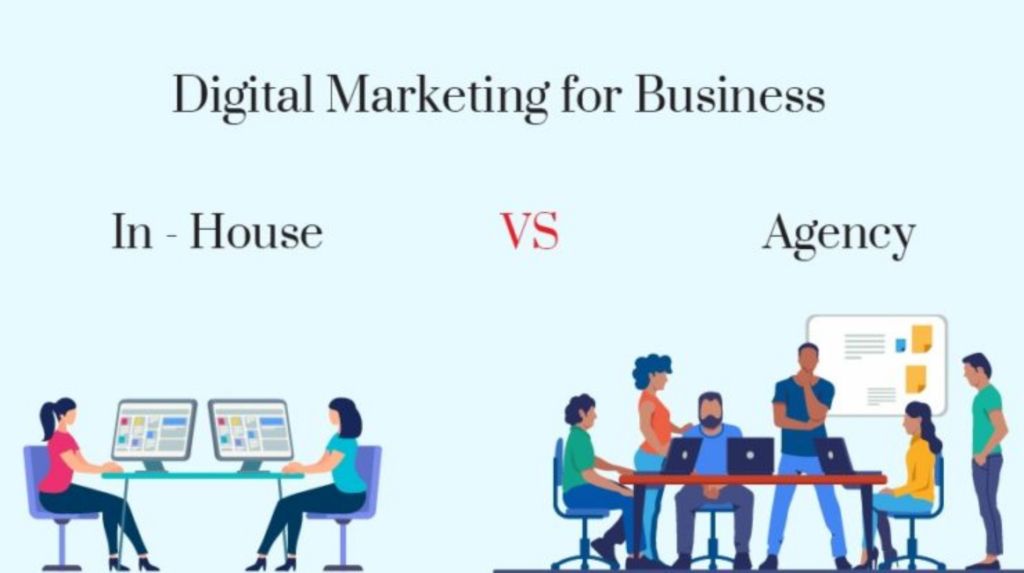
The diminishing appeal of in-house marketing operations
By Joseph Ekeng
The upheaval brought about by the Covid-19 pandemic has reverberated across industries, prompting businesses to rethink their strategies and adapt to the rapidly changing landscape. In the realm of marketing, one notable trend that emerged during the pandemic was the rise of in-house marketing operations. Seen as a way to maintain business continuity and respond swiftly to evolving consumer behavior, in-house agencies became a popular choice for companies of all sizes. However, as the world gradually emerges from the grip of the pandemic, the once-burgeoning trend of in-house marketing is facing new challenges and undergoing a period of reassessment.
The Rise of In-house Marketing Operations
Prior to the pandemic, the concept of in-house marketing was already gaining traction, driven by factors such as the desire for greater control over branding and messaging, as well as the need for faster decision-making and execution. However, it was the onset of Covid-19 and the ensuing lockdowns that accelerated this trend, as businesses scrambled to adapt to remote work environments and ensure business continuity.
Johanna McDowell, a partner at Scopen and CEO of the Independent Agency Search & Selection Company, reflects on the rapid rise of in-house agencies during this period. “The pandemic forced companies to rethink their marketing strategies,” she notes. “In-house operations offered a solution to the challenges posed by remote work and the need for agility in responding to changing market conditions.”
A survey conducted by the Association of National Advertisers found that 82% of their members had some form of an in-house agency, indicating the widespread adoption of this model across industries. The appeal of in-house operations lay in their perceived ability to provide greater control, cost-effectiveness, and alignment with business objectives.
Challenges and Drawbacks
Despite the initial enthusiasm surrounding in-house marketing operations, the trend is beginning to show signs of waning. One of the primary challenges cited by marketers is the expense of setting up and maintaining an in-house agency. While the initial allure of cost savings and greater control may have been compelling, many companies are now grappling with the reality of the financial investment required to build and sustain a fully functional in-house team.
Steve Babaeko, CEO of X3M Ideas, highlights another potential drawback of in-house agencies: the diversion of focus from core business objectives. “Running an in-house agency can be a major distraction for clients,” he explains. “Instead of focusing on product innovation and development, they find themselves mired in the day-to-day operations of running an ad agency.”
Furthermore, the limitations of in-house operations in fostering creativity and innovation are becoming increasingly apparent. Creatives thrive on variety and exposure to diverse perspectives, yet in-house teams may find themselves working on a limited number of brands within the client’s portfolio, stifling their ability to explore new ideas and approaches.
Shifts in Strategy
In response to these challenges, marketers are reevaluating their approach to in-house operations and exploring alternative models that offer greater flexibility and scalability. César Vacchiano, President and CEO of Scopen, predicts a shift towards hybrid models where in-house agencies are managed and staffed by external partners. “This approach allows clients to retain control while leveraging the expertise and resources of external agencies,” he explains.
McDowell echoes this sentiment, emphasizing the importance of collaboration and partnership in driving innovation. “By partnering with external agencies, clients can tap into a broader pool of talent and expertise,” she says. “This enables them to adapt more quickly to changing market dynamics and stay ahead of the competition.”
The Impact of Remote Work
The shift towards remote work has also had a significant impact on in-house marketing operations. While remote work initially seemed like a temporary measure in response to the pandemic, it has since become a permanent fixture for many companies. This shift has forced marketers to rethink their approach to team collaboration and creativity.
McDowell observes that the return to office work has led to a gradual decline in the popularity of in-house operations. “Many marketing agency personnel are now back in their offices, signaling a shift away from remote work,” she notes. Additionally, the downsizing of office spaces due to the pandemic has limited the feasibility of housing in-house teams within client premises.
Furthermore, the separation caused by remote work has taken a toll on team cohesion and creativity. McDowell points out that many once-fluid creative teams have struggled to maintain the same level of innovation and collaboration in a remote setting. As a result, companies are reevaluating the effectiveness of in-house operations in fostering creativity and driving business results.
Looking Ahead: Navigating Uncertainty
As businesses continue to navigate the uncertainties of the post-pandemic landscape, the future of in-house marketing operations remains uncertain. While some companies may opt to maintain their in-house teams, others are likely to explore alternative models that offer greater flexibility and agility. Regardless of the approach chosen, one thing is clear: the era of in-house marketing operations as we know it is undergoing a period of transformation, and companies must be prepared to adapt to the evolving needs of the market.
RECOMMENDED ARTICLES
Chain stores battle for consumers
6 years ago
Union Bank Sponsors Light Camera Africa
9 years ago






Comment
No comments found.